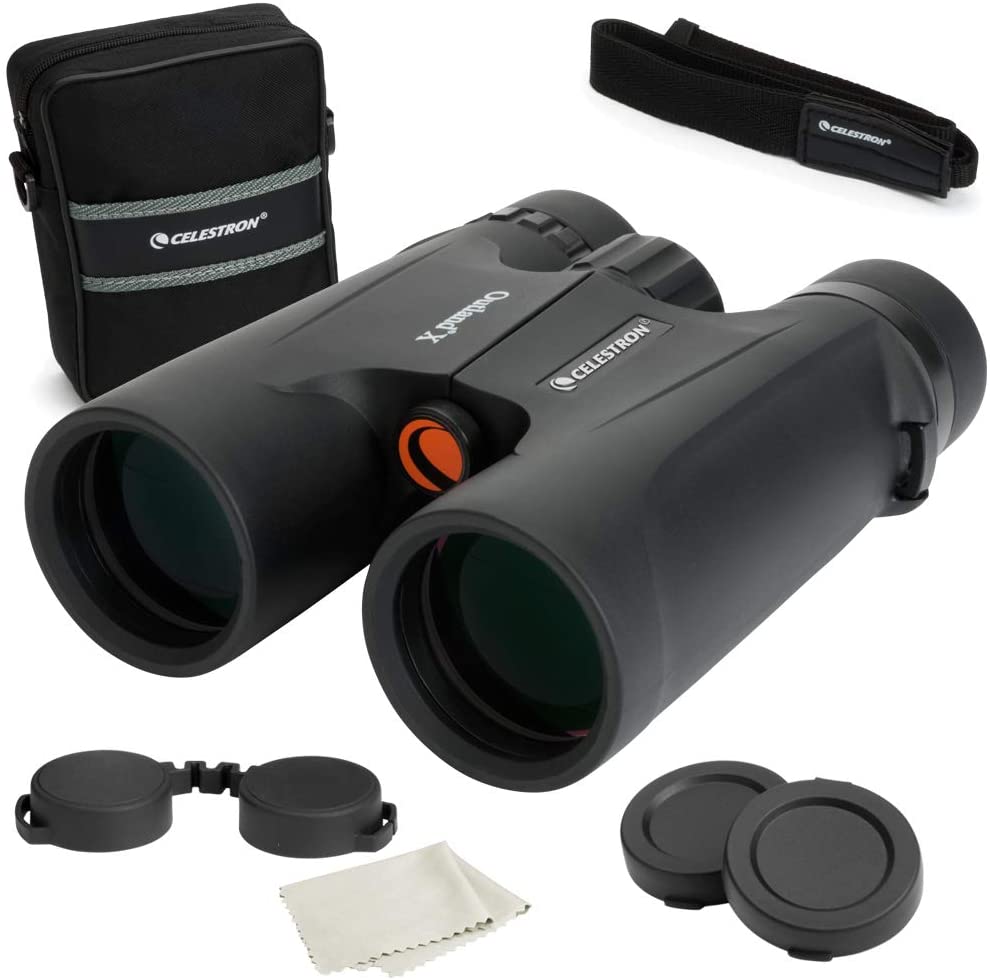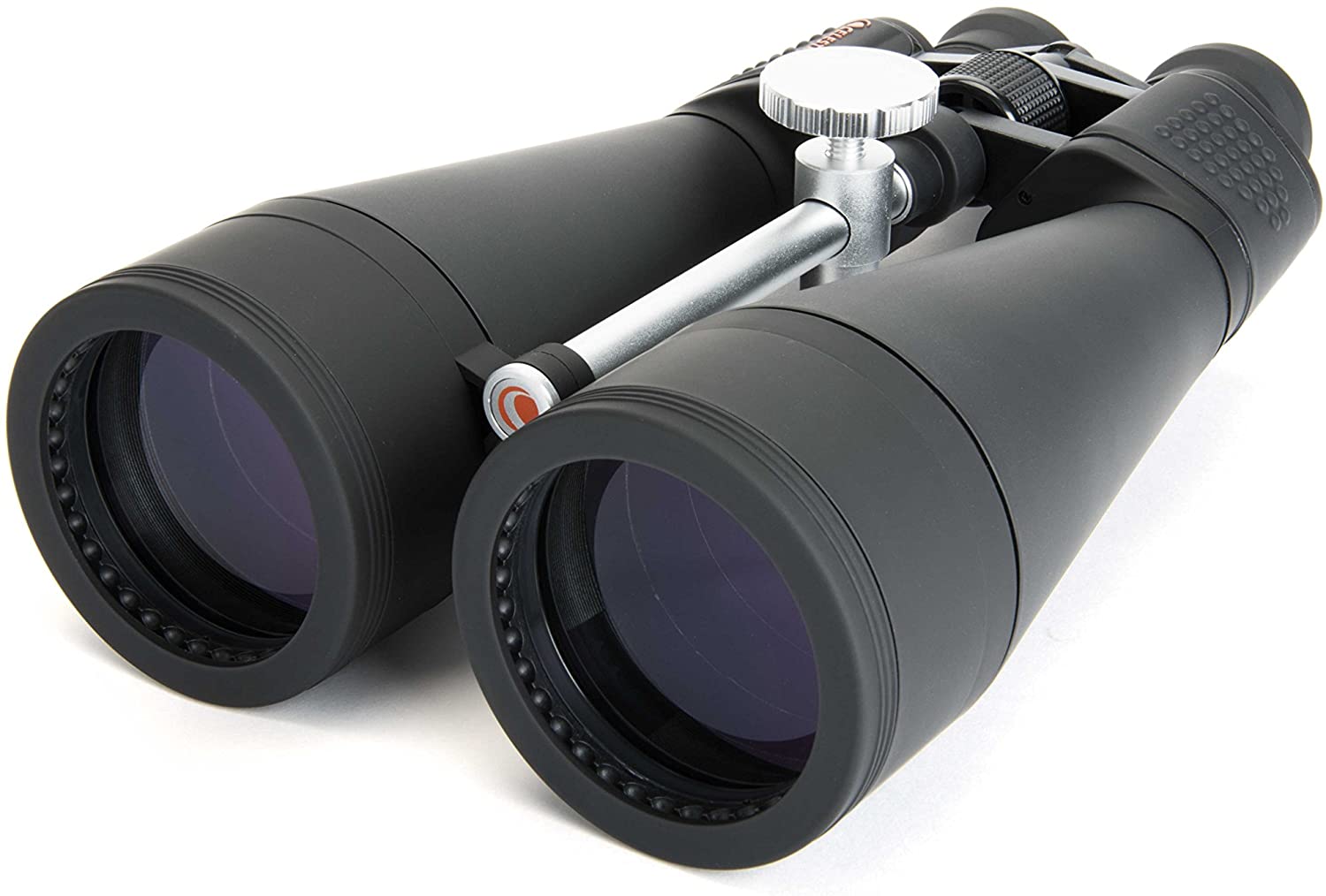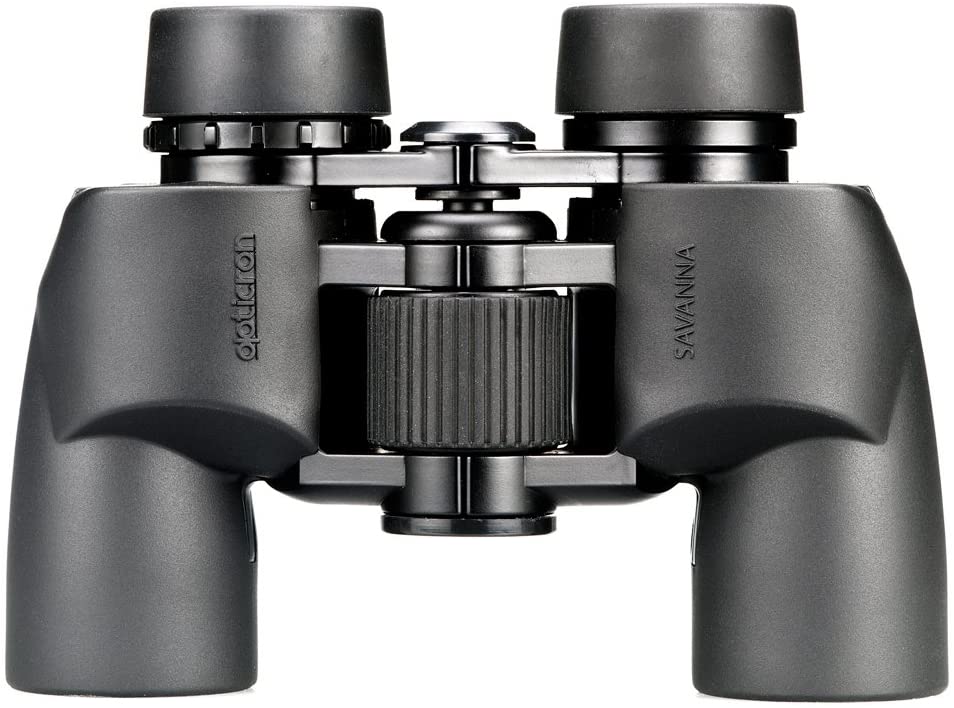The Best Binoculars for Your Money
A good pair of binoculars is essential for explorers who are passionate about truly seeing the great outdoors while birding, hiking, hunting, viewing wildlife, scouting, camping and stargazing.
However, choosing the right pair of binoculars can be a daunting task considering the wide variety of models on the market. Options range from basic binoculars costing less than $100 to professional-grade top-of-the-line devices that can cost over $2,000.
Unless you’re a professional, you don’t need to invest thousands of dollars to get a good pair of binoculars. In fact, there are plenty of great affordable options for beginners and casual wildlife enthusiasts comparable with models that cost twice or three times as much.
Binoculars Buying Guide
Before you start shopping, it’s important to understand the meaning of the numbers used in binoculars' model names. For example, what does the "8x42" in the Celestron Outland X 8x42 binoculars mean?
The numbers refer to two different types of lenses, which together help you see objects that are far away, in varying degrees of light.
The first number (8x in the pair of Celestrons mentioned above) refers to the ocular lens. Ocular lenses are located within the eyepiece, and the number lets you know the image magnification — that is, how much the lens appears to enlarge distant objects. An 8x lens would seem to make the object 8 times larger, whereas a 10x would make it 10 times larger. Binoculars with greater magnification let you see targets that are far away, though they also provide a narrower field of view.
The second number refers to objective lenses. This is the glass at the end of the binoculars that captures light. The number specifies the diameter of the lens in millimeters. Bigger lenses mean more light, and consequently more effective in low-light settings. Bear in mind that larger objective lenses (42 mm or more) also tend to be found in heavier, sometimes unwieldy binoculars.
Binoculars with a magnification between 6x to 8x and objective lenses between 30 mm and 42 mm are generally recommended for classic outdoor activities such as birding and hunting, and they'll also work well for concerts and sports events. They’re lightweight and have strong enough magnification for most users while providing a steady and wide image.
If, however, your goal is to have a closer and narrower view to observe, for instance, deer or small animals from a safe distance, a 10x magnification can give you an extra boost. For stargazing, consider a magnification between 10x to 20x and an objective lens between 50 mm and 80 mm, depending on how narrow you want the field of view to be.
Other equally important factors include:
• Field of view. Simply put, the field of view denotes the scope or width of the area you can view through the lenses. A wider field of view lets you spot things more easily without having to move the binoculars. This is useful in tracking moving targets, such as birds soaring in the sky or football players on the field.
The field of view is measured by the number of feet you can see at 1,000 yards or, alternately, in degrees. Most high-quality binoculars have a field of view of around 300 to 400 feet at 1,000 yards, or between 6 and 8 degrees.
• Eye relief. This is an important factor for people who wear eyeglasses. This feature allows you to adjust the eyepiece’s distance from the eyes. If you wear glasses, look for at least 15 mm of adjustability.
• Close focus range. All binoculars can focus on objects in the distance, but only a few models are capable of focusing on objects that are much closer. The close focus range lets you know what’s the closest distance (in feet) a particular pair of binoculars can focus on effectively.
Many quality binoculars offer a close focus range that’s under 10 feet. This is usually enough for most people, but, if you’re interested in studying things like bugs and butterflies, get a pair of binoculars with a close focus range of 5 to 6 feet.
• Weight. Small and lightweight binoculars are great for birding, hunting and hiking because they’re easy to carry and convenient to pack. Binoculars with larger lenses — like the Celestron SkyMaster below — are typically much heavier. They'll weigh down your backpack and take a toll on your arms if you’re using them for extended periods. Purchasing a tripod could be a solution to fatigue.
Reviewing the Top Binoculars of 2023
1. Best Overall: National Geographic Binoculars
The National Geographic Binoculars offer a fantastic viewing experience for a wide range of outdoor activities. With an 8x42 configuration, these binoculars provide a broader field of view, allowing you to capture the entire scene. Whether you're into sports events, birdwatching, hunting, hiking, or traveling, these binos are designed to enhance your outdoor adventures.
One of the standout features of these binoculars is their performance in lower light conditions. With a 42mm lens diameter, they excel in environments with diminished ambient light levels, such as forests, nature trails, or during sunrise and sunset. You can expect crisp and clear images even when the lighting is less than ideal. These binoculars offer the advantage of minimal image shake, making them especially forgiving for both beginner and professional users. This stability is further supported by the included carrying strap, ensuring a steady and clean picture, even when you're on the move.
Pros:
- Ideal for sports events, birdwatching, hunting, hiking, and traveling
- Excellent performance in low light conditions
- Minimal image shake for steady and clear pictures
Cons:
- Not long-lasting
2. Best in Durability: Vortex Viper HD Roof Prism Binoculars 8x42
List Price: $489.00
Check on Amazon | Check on Walmart
Magnification: 8x | Objective lens: 42 mm | Angular field of view: 7.8° | Linear field of view at 1,000 yds: 409 ft | Eye relief: 18 mm | Close focus: 5 ft | Weight: 1.53 lbs
The Vortex Viper HD is a great option for birders and wildlife enthusiasts who are looking for sharp images, along with a well-balanced design they can use for hours at a time.
These Viper 8x42 features extra-low dispersion (ED) glass to minimize color fringing (or blurring) and delivers optical clarity and premium color fidelity. The lenses are fully multi-coated with anti-reflective coating that helps reduce glare, improves image contrast and enhances performance in poor lighting.
Another great asset is Vortex’s lifetime warranty, which covers repairs or replacements in the event your binoculars are damaged or defective.
The price tag, typically around $500, may be a bit of a turnoff, especially if you’re just starting to explore wildlife or birdwatching as a hobby. But if you’re serious about it and don’t want to pay over $1,000 for a top-of-the-line pair of binoculars, the Viper HD's crisp image quality really makes them worth the money.
Pros
- Lifetime warranty for damages and defects
- Fully adjustable shoulder harness is well-padded
- Light transmission is virtually free of chromatic aberration
- Eyepiece and ocular caps made from durable rubber
Cons
- On the pricey side, at around $500
- Diopter adjustment can be difficult to unlock
3. Best for low prices: Celestron Outland X 8x42 Binoculars
List Price: $99.95
Check on Amazon | Check on Walmart
Magnification: 8x | Objective lens: 42 mm | Angular field of view: 6.8° | Linear field of view at 1,000 yds: 357 ft | Eye relief: 18 mm | Close focus: 13.1 ft | Weight: 1.38 lbs
If you are looking for a well-rounded pair of binoculars for occasional outdoor activities without breaking the bank, take a look at the Celestron Outland X. This cost-effective pair usually retails for less than $100.
With 8x magnification and multi-coated lenses to obtain better contrast views and prevent marring, the Outland X is suitable for most outdoor activities. They are completely covered in rubber, which makes them comfortable to grip and durable. They’re also waterproof and fog-proof.
This pair of binos includes a carrying bag, a neck strap, a lens-cleaning cloth and lens caps. It can also be mounted in a Celestron tripod, which is sold separately for about $20.
Pros
- Neck strap, eyepiece covers and cleaning cloths included
- BAK-4 prisms for improved image quality
- Large objective lens for good field of view
- Lightweight and comfortable to hold
Cons
- Images may be dark in low-light settings
- Eye cup distance adjustment can be sensitive
4. Best for stargazing: Celestron SkyMaster 20x80 Astro Binoculars
List Price: $199.95
Check on Amazon | Check on Walmart
Magnification: 20x | Objective lens: 80 mm | Angular field of view: 3.7° | Linear field of view at 1,000 yds: 195 ft | Eye relief: 18 mm | Close focus: 108 ft | Weight: 4.69 lbs
If you enjoy going outside after dark to gaze at meteor showers, super moons, lunar eclipses and once-in-a-lifetime celestial events, the Celestron SkyMaster could definitely boost the experience.
Designed specifically for skywatching activities, these binoculars are packed with 20x high magnification ocular lenses and 80 mm objective lenses for long-range viewing in low-light conditions. They have an effective close focus range of 108 feet and a focus knob to manipulate image clarity and zoom in on the details.
Like other Celestron models, the SkyMaster binoculars are covered with rubber to protect their aluminum and polycarbonate chassis from rough conditions. Weighing close to 5 lbs, they could be considered a bit heavy; however, with the integrated mount adapter they can be easily attached to a tripod for a hands-free (and more stable) view.
Overall, the Celestron SkyMaster 20x80 is a great option for amateur astronomers who want an alternative to a telescope that’s smaller, lighter and much easier to carry.
Pros
- Strong 20x magnification ocular lenses for long-distance viewing
- Ideal for expansive, wide-angle imagery
- Foldable eyecups for generous eye relief
- Low price compared to more high-end binoculars
Cons
- May feel heavy after a while
- May be difficult to focus on moving objects
5. Best binoculars for kids: Opticron Savanna WP 6x30 Binocular
List Price: $132.90
Magnification: 6x | Objective lens: 30 mm | Angular field of view: 8° | Linear field of view at 1,000 yds: 420 ft | Eye relief: 21 mm | Close focus: 9.8 ft | Weight: 1.1 lbs
The compact design of the Opticron Savanna WP 6x30 binoculars is suitable for adults and children 7 years and older.
With a minimum 50 mm interpupillary distance (IDP), they can be adjusted to the right distance, helping reduce eyestrain in children. They weigh about 1 pound, which is light enough for pretty much all family members to carry comfortably.
They’re waterproof, which provides some extra protection if by any chance they end up in a river or lake, and the size — 4.6" x 6.3" x 1.6" — makes them comfortable for even smaller hands to hold.
The 6x magnification may not be the most powerful option, but it’ll provide a steadier image for shaky hands and a wider field of view to explore wildlife.
Pros
- Minimum 50 mm IPD can reduce eye strain
- Generous "sweet spot" of sharpness with minimal blurring
- Bright, vivid image with accurate colors and contrast
- Quality construction and rubber armoring for secure grip
Cons
- Lacks an anti-fogging feature
- May experience glare from nearby light sources
Why Trust Us
Our commitment to the consumer begins with product selection and ends with the last word we write in each article. Each pair of binoculars is carefully vetted quantitatively through star ratings and the number of reviews and qualitatively through careful examination of reviews and the features each one has to offer. Leveraging our team of bargain hunters, we’re also always sure to keep your budget in mind while we find the best binoculars on the market. Our team of experts is dedicated to accurately depicting the pros and cons of each pair of binoculars, translating technical product specifications into information you can understand. Our mission is to help you enjoy the best sightseeing experience possible for your hard-earned money.





